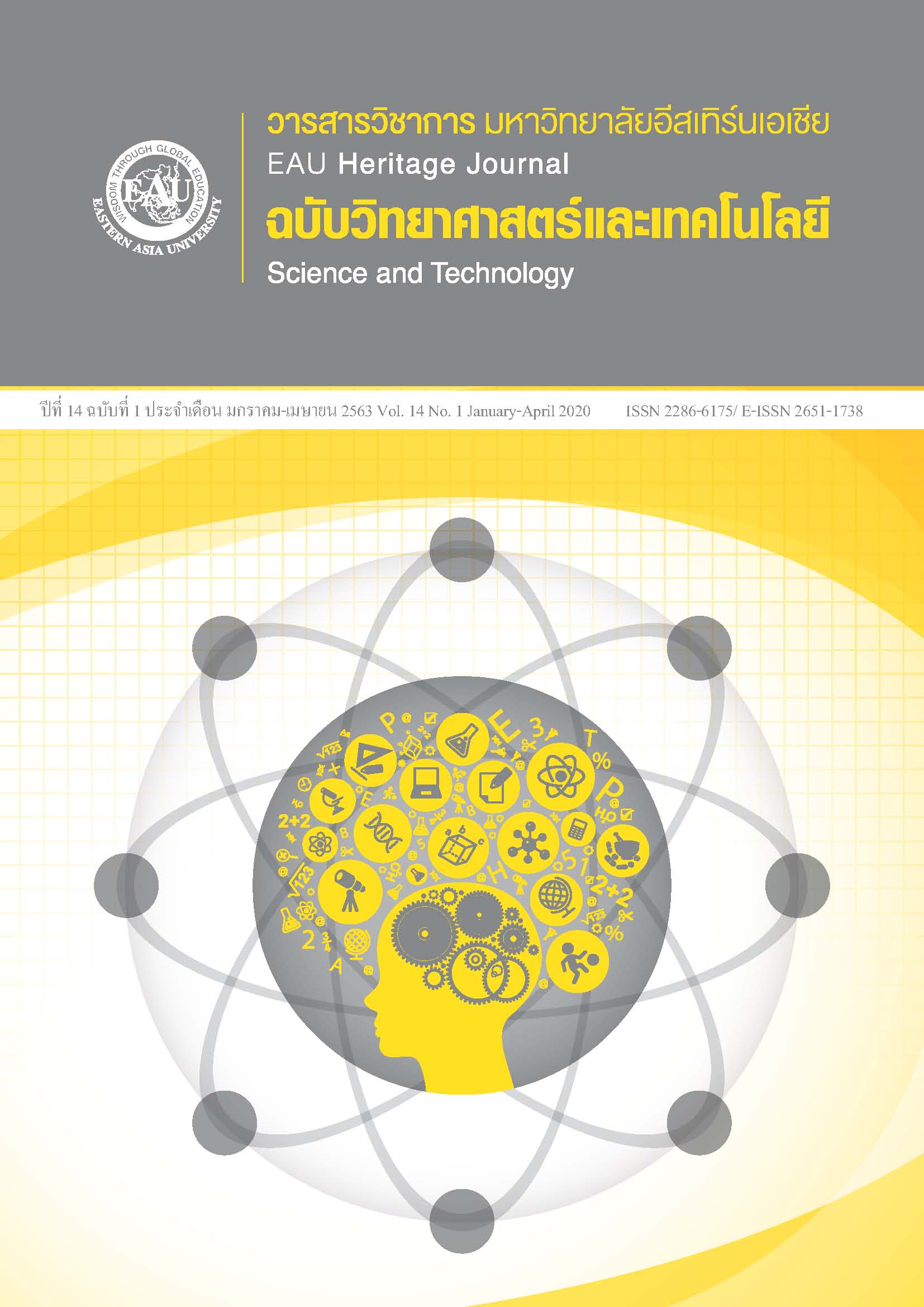การลดเปอร์เซ็นต์การตายของต้นกล้ามะเขือเทศพันธุ์เชอรี่แดงจากโรครากและโคนเน่า ด้วยสารชีวภัณฑ์
คำสำคัญ:
มะเขือเทศพันธุ์เชอรี่แดง, โรครากและโคนเน่า, สถานีเกษตรหลวงอินทนนท์, สารชีวภัณฑ์บทคัดย่อ
การวิจัยครั้งนี้มีวัตถุประสงค์เพื่อ ลดเปอร์เซ็นต์การตายของต้นกล้ามะเขือเทศพันธุ์ เชอรี่แดงจากโรครากและโคนเน่าสาเหตุจากเชื้อ Fusarium sp.ด้วยสารชีวภัณฑ์ผลิตโดยสถานีเกษตรหลวงอินทนนท์ โดยเพาะกล้าบนวัสดุปลูกปุ๋ยหมัก ขุยมะพร้าว พีทมอส (1:1:1) เป็นเวลา 5 สัปดาห์ มี 5 กรรมวิธี ได้แก่ กรรมวิธี 1 ไม่ฉีดพ่นสารชีวภัณฑ์ กรรมวิธีที่ 2-5 รองก้นหลุมด้วย พีพี-สเตรปโต 1 กรัม/หลุม/ต้น และฉีดพ่นสารชีวภัณฑ์ ผลการทดลองพบว่า กรรมวิธีที่ได้ผลดีที่สุดคือกรรมวิธีที่ 2 โดยรองก้นหลุมด้วยพีพี สเตรปโต 1 กรัม/หลุม/ต้น และฉีดพ่นสารชีวภัณฑ์ในสัปดาห์ที่ 2-4 ได้แก่ พีพี-บี10 (200 กรัม/น้ำ 20 ลิตร) พีพี ไตรโคเดอร์มา (20 กรัม/น้ำ 20 ลิตร) พีพี-บีเค33 (100 กรัม/น้ำ 20 ลิตร) มีเปอร์เซ็นต์การตายของต้นกล้ามะเขือเทศน้อยกว่ากรรมวิธีอื่นคือ 0.32% รองลงมาคือกรรมวิธีที่ 4 โดยรองก้นหลุมด้วยพีพี สเตรปโต 1 กรัม/หลุม/ต้น แล้วฉีดพ่นด้วยพีพี ไตรโคเดอร์มา (20 กรัม/น้ำ 20 ลิตร) ในสัปดาห์ที่ 4 มีเปอร์เซ็นต์การตายของต้นกล้ามะเขือเทศ 0.64% ส่วนกรรมวิธีที่ 1 ที่ไม่มีการควบคุมโรคพบเปอร์เซ็นต์การตายมากที่สุด คือ 7.37%
เอกสารอ้างอิง
References
Agricultural Protector Foundation. (2018). Instruction of pest and disease control in The Royal Project Foundation 2017. Chiang Mai: Highland Research and Development Institute (public organization). (in Thai)
Chaiprateep, E. (2015). Effects of lycopene-rich tomatoes in benign prostatic hyperplasia and prostate cancer. Thai Pharmaceutical and Health Science Journal, 10(3), 117-121. (in Thai)
Chen, Y., Yan, F., Chai, Y., Liu, H., Kolter, R., Losick, R., & Guo, J-H. (2013). Biocontrol of tomato wilt disease by bacillus subtilis isolates from natural environments depends on conserved gene mediating biofilm formation. Environmental Microbiology, 15(3), 848-864.
Inwang, B., & Chamswarng, J. (1986). Control of tomato stem rot (Sclerotium Rolfsil) in microorganisms isolated from the cultivated soils. Proceeding of 24 th Kasetsart University national conferece, Bangkok. Bangkok: Kasetsart University. (inThai)
Klangsawad, A., & Thummabenjapone, P. (2013). Application of Streptomyces-PR87 for growth enhancement of tomato. Khon Kaen Agriculture Journal, 41(Suppl.1), 205-212. (in Thai)
Mujoko, T., Sastrahidayat, R. I., Hadiastono, T., & Djauhari, S. (2014). Antagonistic effect of Streptomyces spp. On spore germination and mycelial growth of Fusarium oxysporum f. sp. lycopersici. International Journal of Biosciences, 5(9), 414-422.
Ozbay, N., & Newman, E. S. (2004). Fusarium crown and root rot of tomato and control methods. Plant Pathology Journal, 3(1), 9-18.
Rini, C.R., & Sulochana, K.K. (2007). Usefulness of Trichoderma and Pseudomonas against Rhizoctonia solani and Fusarium oxysporum infecting tomato. Journal of Tropical Agriculture, 45(1-2), 21-28.
Srisook, W. (2010). How to eat tomato for obtaining high lycopene. Retrieved from https://www.pharmacy.mahidol.ac.th/th/knowledge/article/1/benefit-tomato-lycopene/. (in Thai)
Suriyagamon, S., Phonkerd, N., Bunyatratchata, W., Riddech, N., & Mongkolthanaruk, W. (2018). Compost seed of Trichoderma harzianum UD 12-102 in controlling collar and stem rot of tomato caused by Sclerotium rolfsii. Environment and Natural Resources Journal, 16(2), 20-28.
Tan, S., Dong, Y., Liao, H., Huang, J., Song, S., Xu, Y. & Shen, Q. (2013). Antagonistic bacterium Bacillus amyloliquefaciens induces resistance and controls the bacterial wilt of tomato. Pest Management Science, 69(11), 1245-1252.
The Royal Agricultural Station Inthanon. (2018). Report of income of The Royal Agricultural Station Inthanon 2018 (Research Report). Chiangmai: The Royal Agricultural Station Inthanon (in Thai)
Viterbo, A., Wiest A., Brotman, Y., Chet, I., & Kenerley, C. (2007). The 18mer peptaibols from Trichoderma virens elicit plant defence responses. Molecular Plant Pathology, 8(6), 737-746.







